Fish you can watch while snorkeling in the reef
March 23, 2023
You have seen these fish while snorkeling; do you know what they are called?
Nothing like snorkeling to get in touch with the marine world. An activity that does not require much practice and is easy to do. You only need the right fins and a mask to enter the wonders of the reef and learn from it.
The sensation of diving into the water and swimming to admire nature, is inexplicable.
While doing this activity, we can relax, and the only thing that matters is the fish we see at the bottom of the sea.
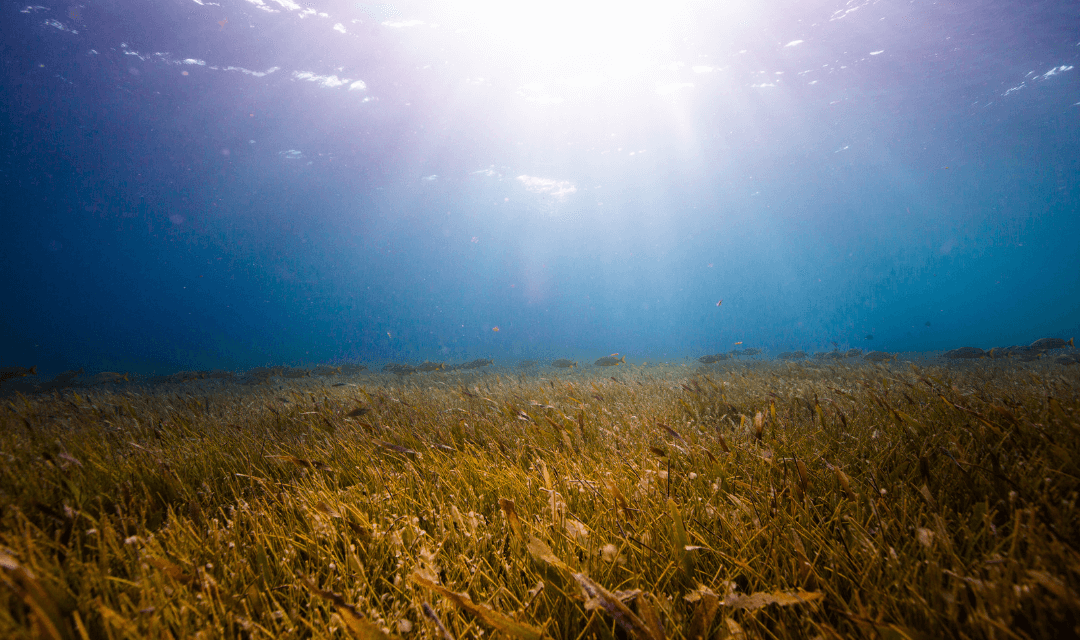
Isla Mujeres
Where can I snorkel in Mexico?
It depends on what area or region you are in. However, without a doubt, one of our favorite places to snorkel is Isla Mujeres due to its diversity, and calm shallow waters. If you are planning a trip to the Riviera Maya, add this activity to your bucket list. It's a must!
The reefs you can't miss for snorkeling in Isla Mujeres:
- 📍 Manchones Reef
- 📍 El Farito Reef
- 📍 Sac Bajo Reef
- 📍 El Meco Reef
The best part of snorkeling is the fish. In those reefs, you will find a lot of them. Here we will tell you more in detail about some of the fish you will find! 🐠
The 6 most seen fish:
1. Blue Tang Surgeonfish
The favorite of many! You have probably seen it in some animated movies. Fish like this live near coral reefs and are distinguished by their blue color.

Sometimes they can change to a darker blue or violet as a sign of distress. This species can clean algae from coral sites, benefiting the reefs greatly.
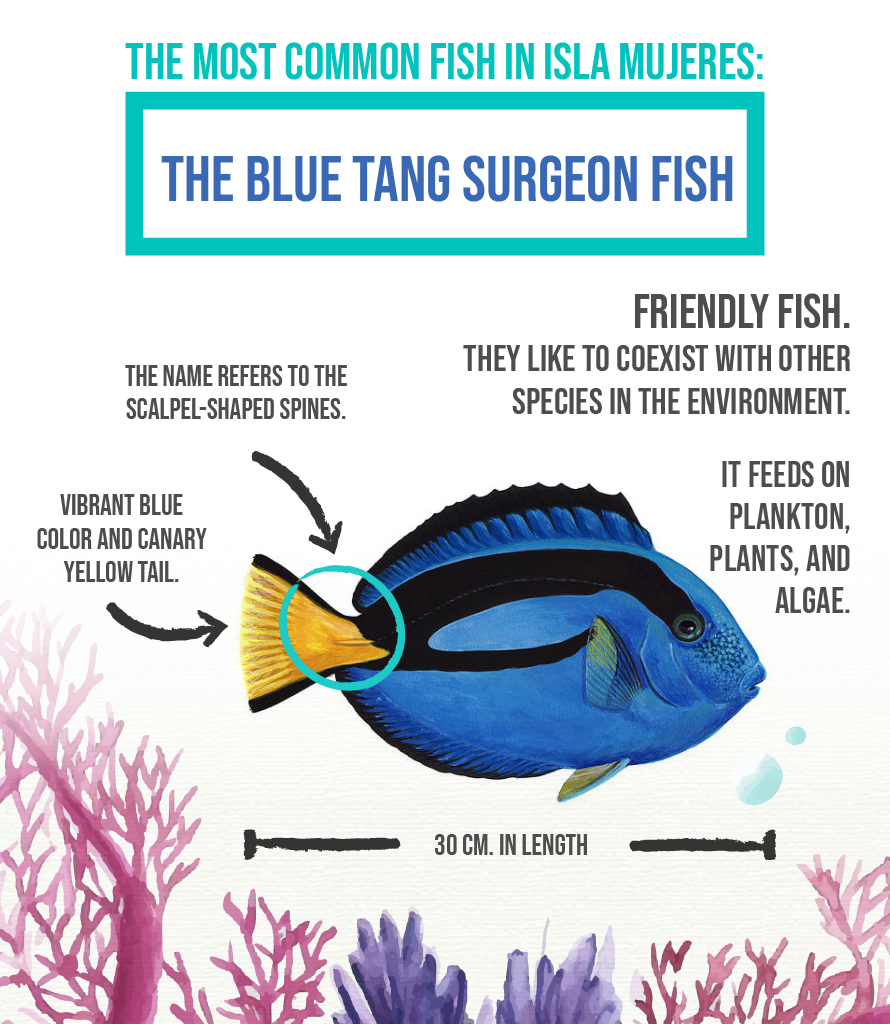
2. Sergeant Major
A species that you will surely remember for its black and yellow stripes, hence its name. These fish live mainly in the Americas. Something characteristic of them is that in order to confuse their predators, they change their appereance and change color to camouflage with their surroundings.
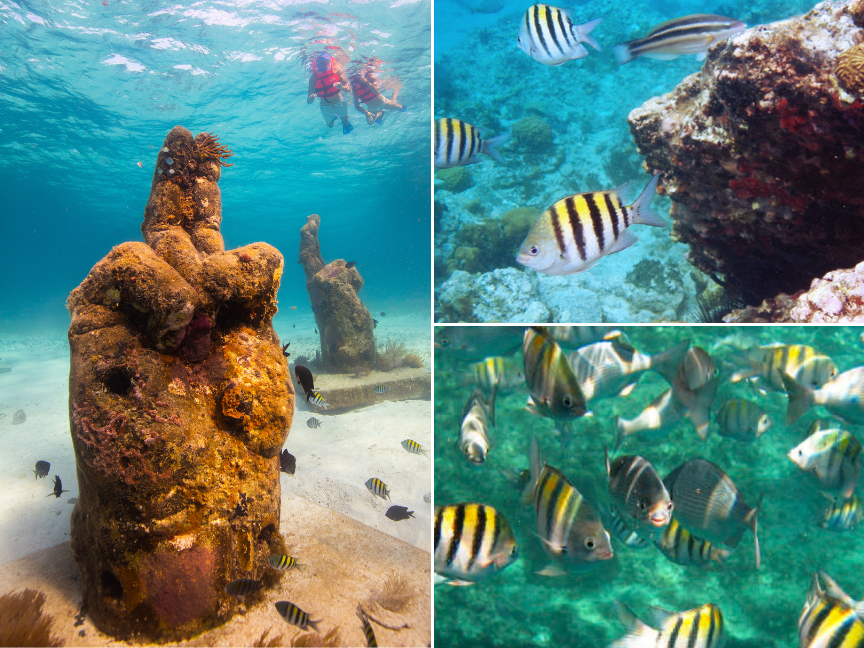
3. Bluehead Wrasse
A very peculiar and small fish. As its name suggests, it has a blue head, followed by two black stripes. It is one of the fish that feeds more than 2 or 3 times a day. Its main food is zooplankton and some small benthic organisms, including different types of crustaceans.
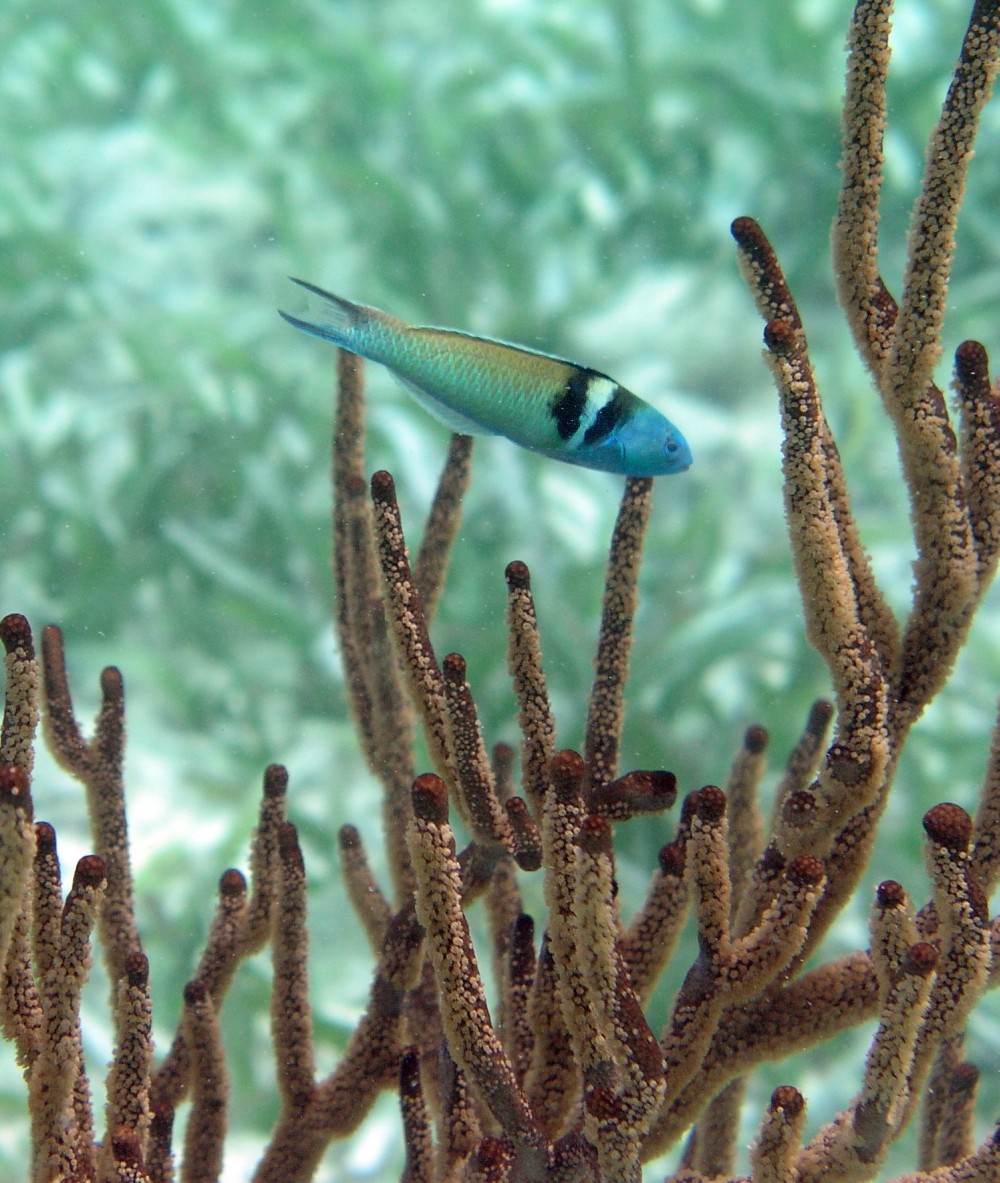
4. Porkfish
A tricolored fish with a mostly silver body. It has vibrant yellow horizontal lines and measures between 25 and 40 cm.
One of the most curious characteristics of this fish is that it is usually more active at night. Its diet is based on mollusks and crustaceans.
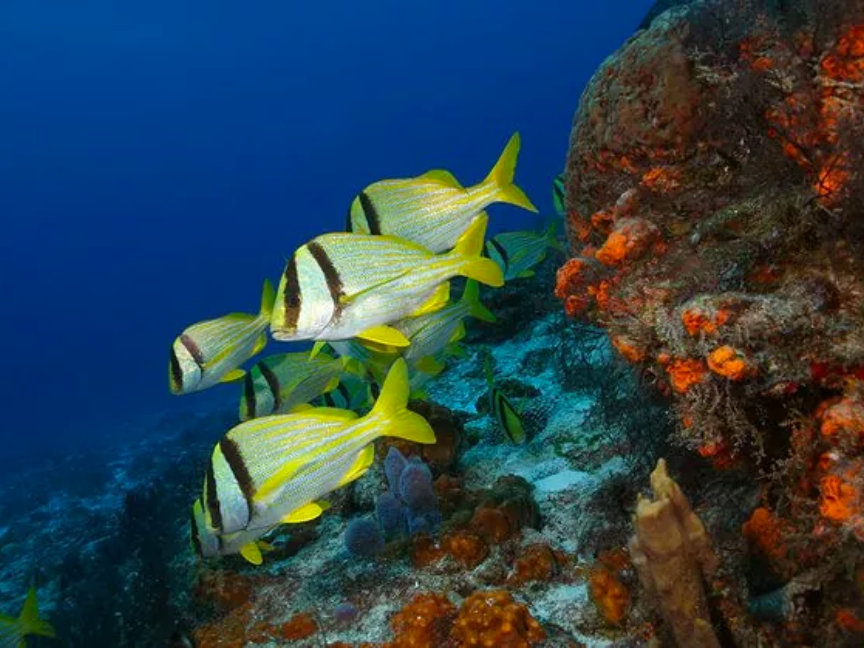
5. French Grunt
This is another fish that you will surely remember for its 12 peculiar yellow stripes. Its head is slightly pointed and its scales are rough. They can measure up to 30 cm.
They inhabit reefs, soft bottoms, and near corals.

6. Blue Chromis Damselfish
When you see these small fish, they will become your favorite because of their bright electric blue color. Their bodies are compressed, elongated, and oval. They live in the Caribbean and prefer warm tropical waters. Their depth range is between 1-15 meters.
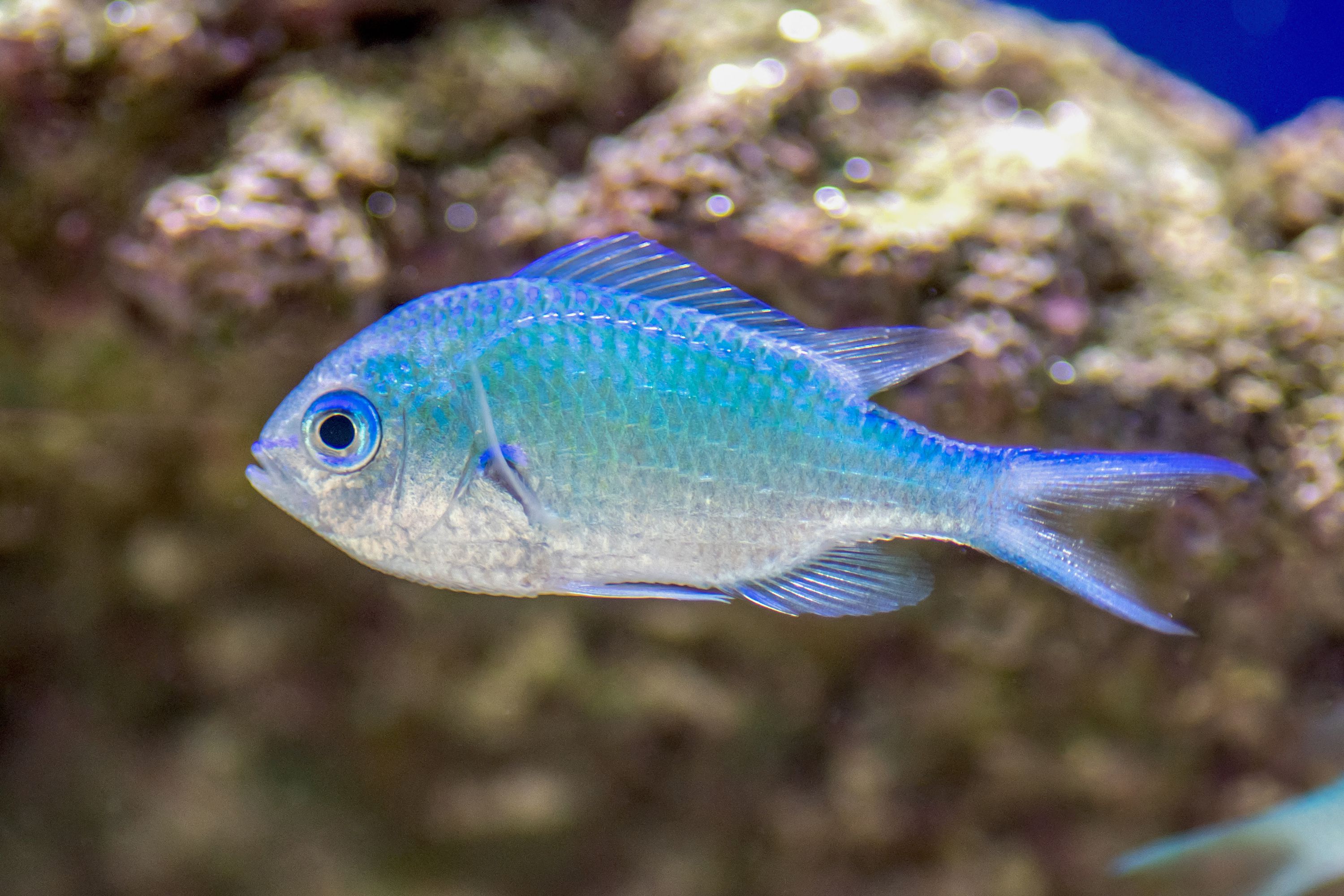
They feed on zooplankton and jellyfish. Its size is up to 15 cm in length.
Some not-so-popular fish that if you’re lucky enough, you’ll be able to see 👀
Ocean Surgeonfish
A large fish, its length reaches 38 cm. It lives on coral reefs but also prefers shallow waters. Its coloration is between gray and blue, with a touch of dark brown.
Something curious about this fish is its ability to change color quickly and it likes to move in groups of 5 or more individuals, always in search of food.
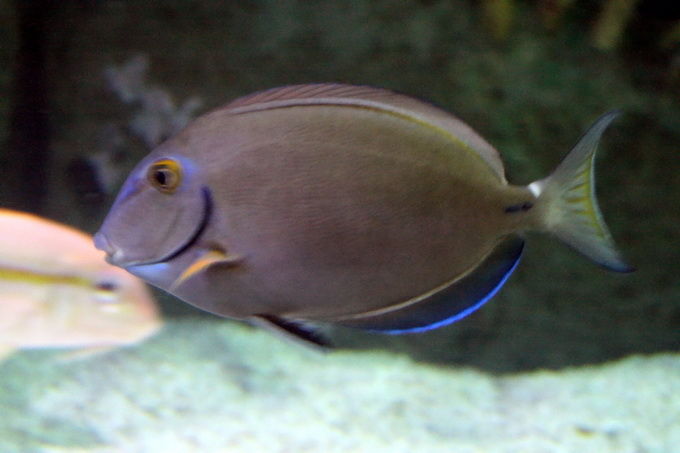
Blue Striped Grunt
This species differentiates between juvenile and adult stages, changing its appearance completely. Young fish have an orange top and yellow bottom with a neon blue line.
In adulthood, they have a double coloration that divides their body in two, yellow on the front and metallic blue-green on the back. Their length is 19 cm. Something curious is that they can be very skilled at burying themselves and fleeing predators.
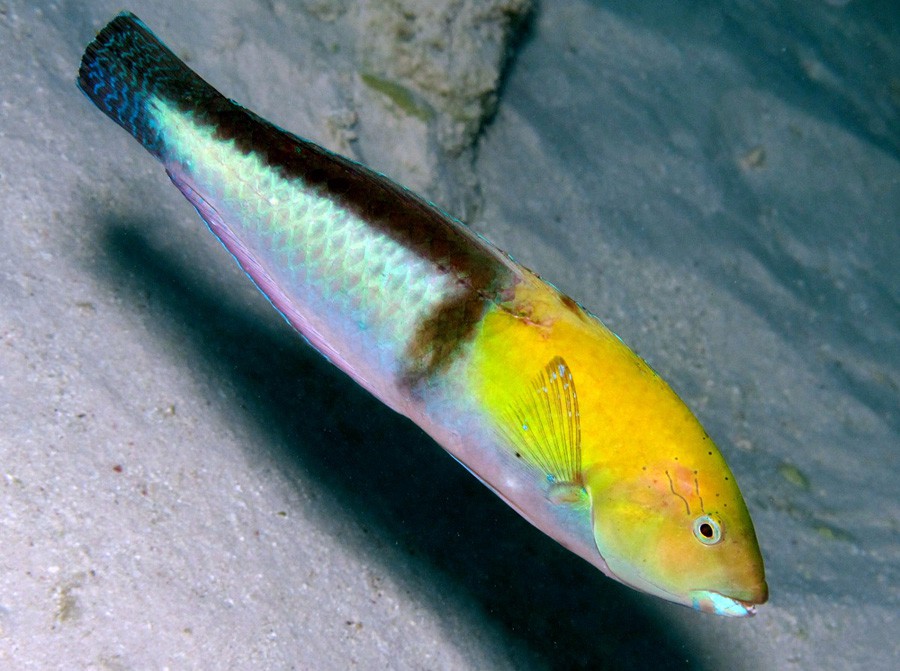
Bicolor Damselfish
You can find these almost anywhere in the world: in tropical, subtropical, and temperate waters, and even a few can be found in fresh waters.
They are abundant in shallow reef environments. Therefore, it is possible to see them while swimming along the surface although they tend to be very territorial.
Its coloration varies between emerald green, blue, and yellow. The Bicolor Damselfish may have a dark front body and a light or yellow dorsal.
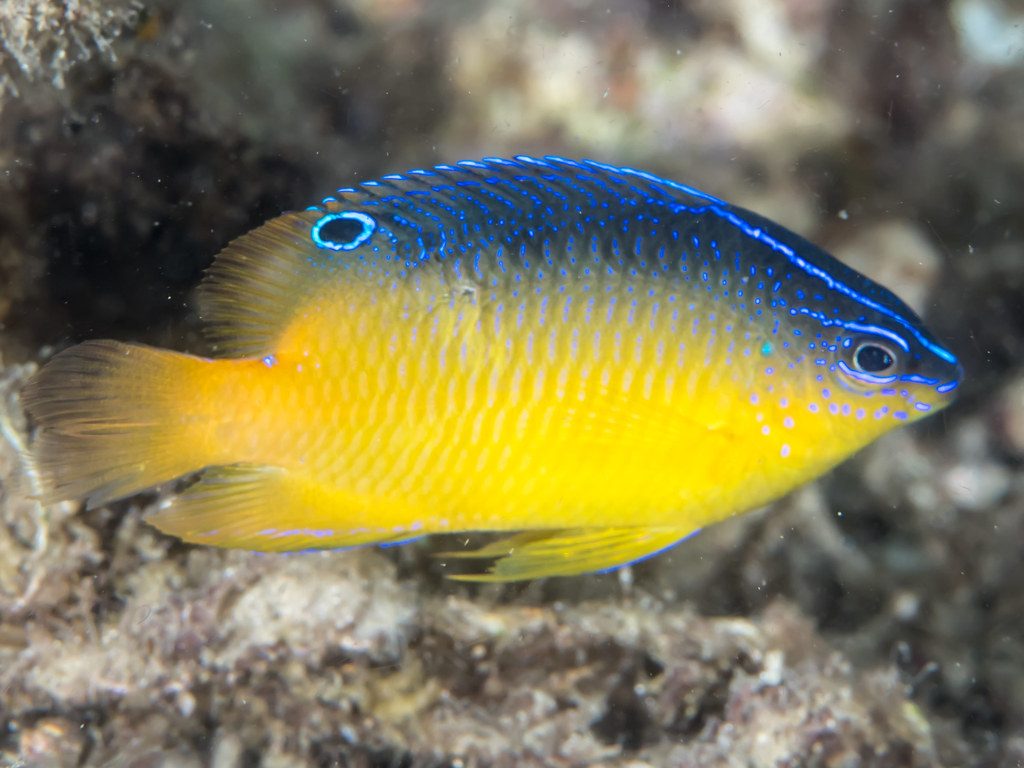
Gray Angelfish
This fish is also commonly found near coral reefs. They are found in pairs or in groups, although they are very proficient at swimming alone.
At depths between 2 to 30 meters, they eat sponges, invertebrates, algae, and more. As its name implies, the color of this species is pale gray and its body shape is oval.
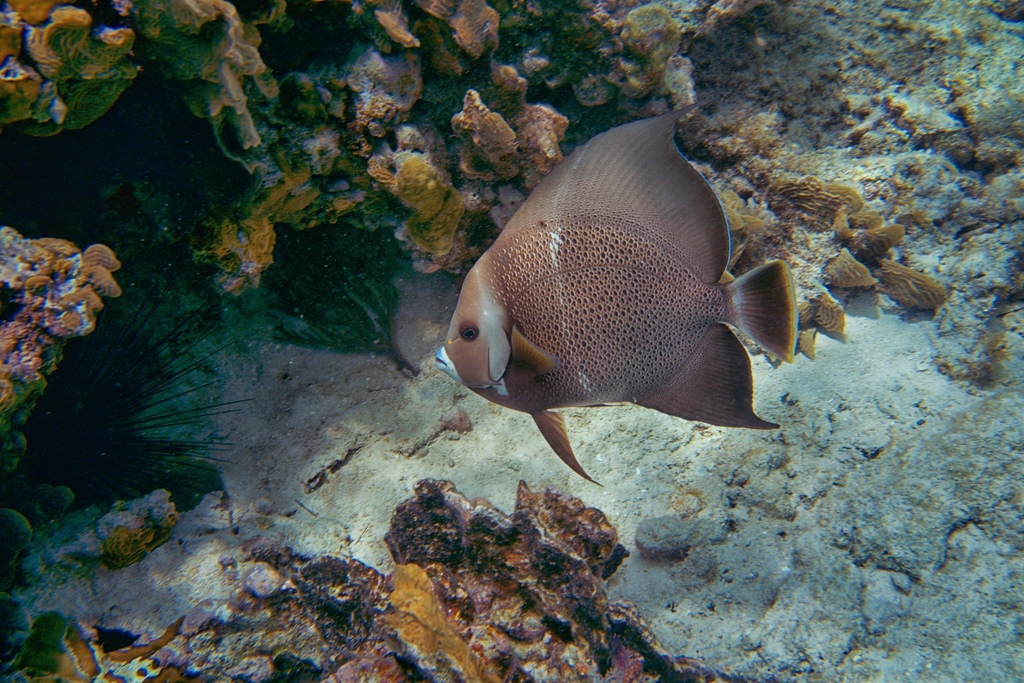
Rainbow Parrotfish
This is one of the largest herbivorous fish in the Atlantic. Males can reach over 1.2 meters. You may wonder why it is named after a parrot. This is because they are quite attractive fish in size and color. They have a combination of dark green and orange.
An unusual feature of this species is that it can change sex. Females can become fully functional males.
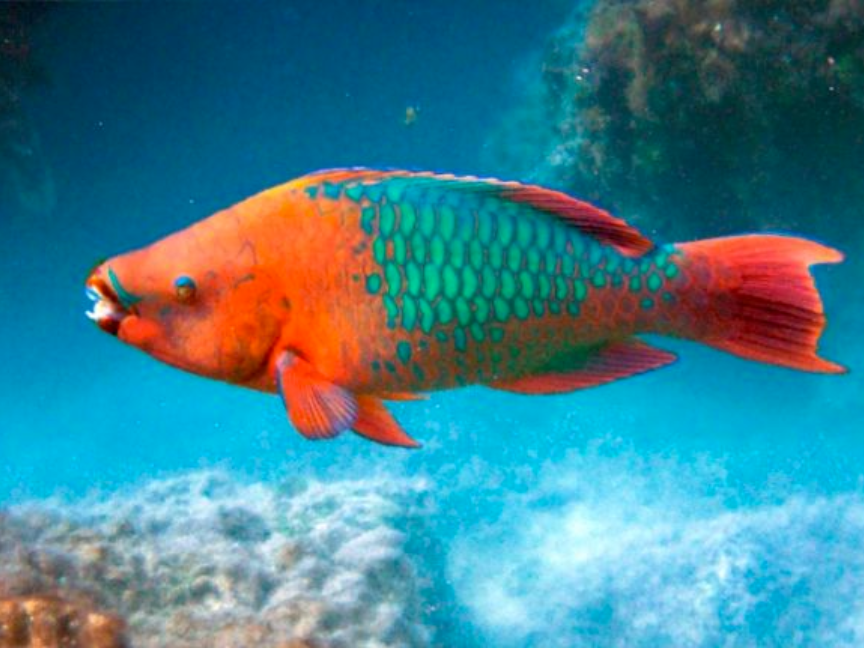
Here are some curiosities:
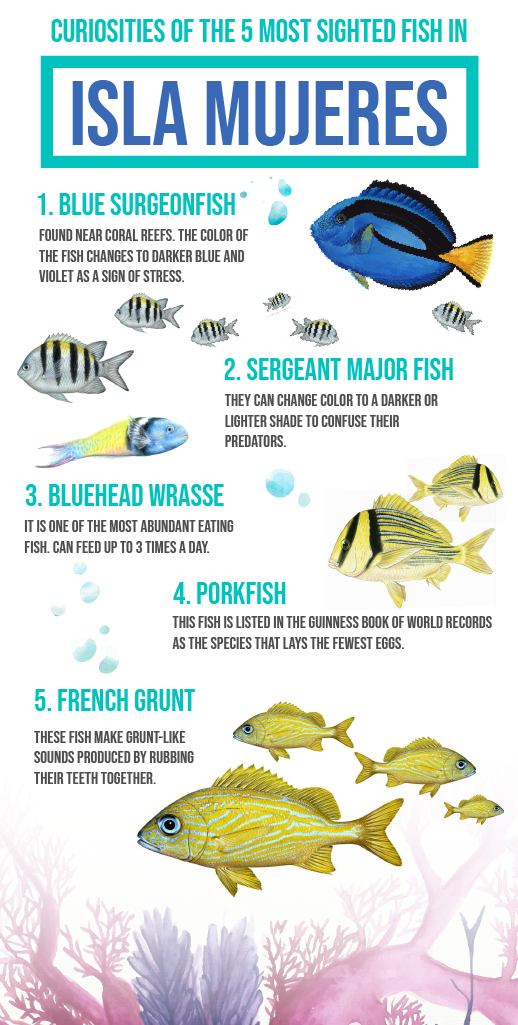
4 recommendations to continue preserving its ecosystem:
▶️ Avoid using sunscreen; titanium dioxide can be extremely damaging to marine life.
▶️ Snorkel responsibly. Don't take anything from the ocean except garbage.
▶️ Respect the home of hundreds of species. Coral reefs are very fragile and take many years to grow.
▶️ Don't touch or feed the fish. The food we eat can be harmful to them and alter their behavior.
Now that you know more about all the characteristics of the fish you can find in the Caribbean, it's time to pack your bags, get your swimsuit ready and get ready to snorkel.
Enjoy it and don't forget to share your experience with us! 😃

¡Con la maleta lista! Apasionada de la fotografía y los viajes de aventura. Me encontrarás siempre f...
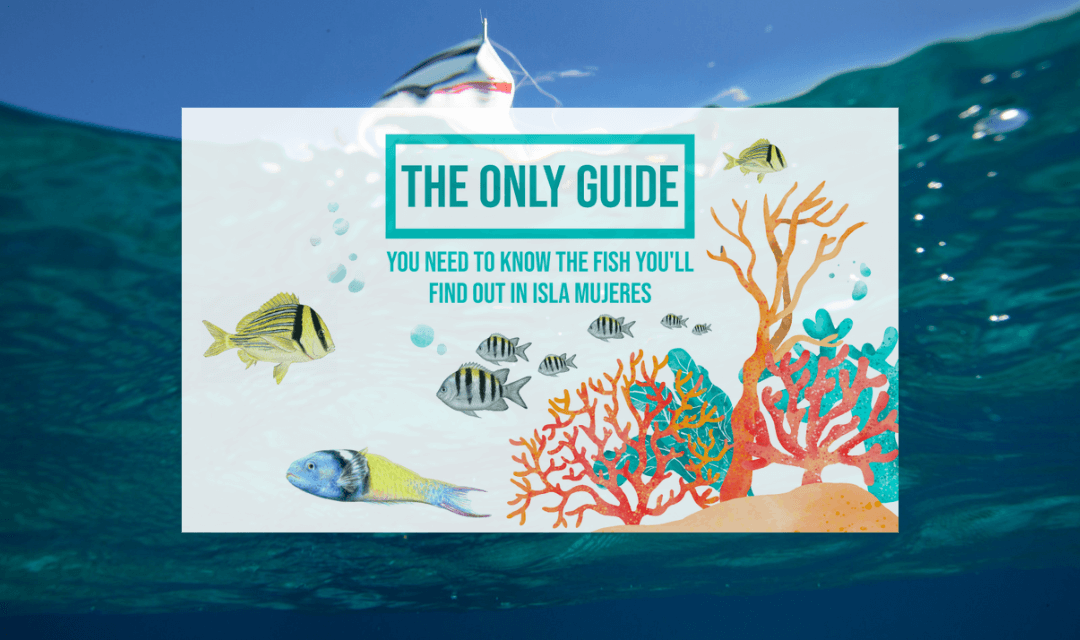
Posts Relacionados
Grupo Xcaret
Hotels






